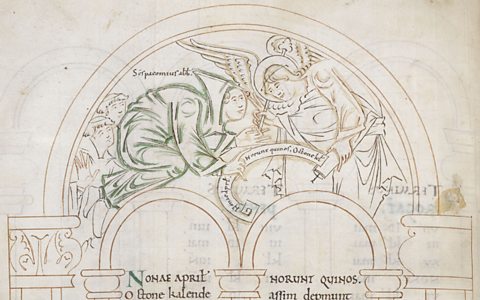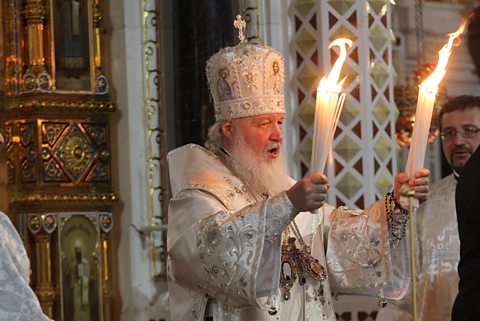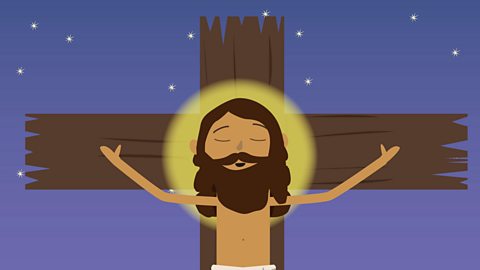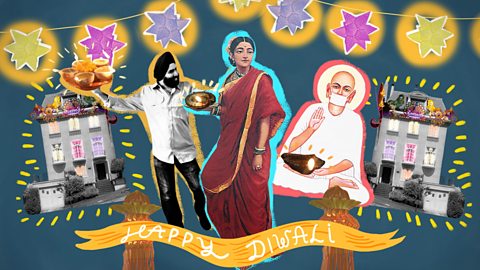Easter. The oldest Christian festival and the holiest in the Christian Calendar celebrates the resurrection of Jesus Christ three days after his crucifixion.
It's at the very heart of the Christian faith, and is celebrated by billions. And yet Easter falls on a completely different date every year.
Why is it such a movable feast?
The answer is loaded with controversy, and is still dividing the Church to this day.
Even the earliest accounts of the life and death of Jesus, the gospels, disagree over the precise date on which he died.
All four of the gospels - Mathew, Mark, Luke and John - report his death at the time of the Jewish Passover, but differ over the date.
John puts the crucifixion on the day of the Passover itself, on the 14th day of the first spring moon, according to the Hebrew calendar.
But the gospels of Matthew, Mark and Luke record that Christ ate the Passover meal and was crucified on the following day, the 15th day after the first spring moon.
So just a few generations after the death of Jesus differences have already emerged about when to mark his death and resurrection.
1. A movable feast
Easter is the most famous movable feast in our calendar. Its date appears to change unpredictably from year to year, and different branches of Christianity disagree on when exactly it should be marked. In some years, western Christians and the Eastern churches (such as the Greek and Russian communities) celebrate Easter on the same Sunday – but that is not always the case.
It may seem strange that the Resurrection is not remembered on the same date across Christianity, and the reasons for this are intriguing. After the death of Jesus, Christian communities disagreed on the date it was said to have happened. Using the lunar calendar to determine its date added another layer of complexity, as there were various methods to calculate lunar cycles.
Christians became real experts in the science of calculating the date of Easter year by year, known as ‘computus’. It’s no exaggeration to say that Easter played a key role in keeping maths and astronomy alive during the early middle ages. Groups across continents also used different Gospels to back up their traditions resulting in increasingly heated arguments.

2. Follow John the Evangelist - and be a heretic
At the end of the 2nd Century, the bishop of Rome threatened the community of Ephesus (in modern day Turkey) with excommunication if they continued to celebrate Easter on the 14th day of the first spring moon, in accordance with John’s Gospel.
Christians in Rome and Alexandria celebrated on the first full moon of the spring equinox, when the day lasts as long as the night.
At the first Council of Nicea in 325 AD, it was decided that all churches should follow the Roman-Alexandrian custom. In theory, this should have ended the argument; but in practice, with no universal method of calculating Easter day, there were still problems.
What happened in early England was a good example of how the disagreements were both religious and political.

3. England: May the strongest saint win!
The most famous dispute over Easter in early England was acted out in the 7th Century, after Northumbria had been evangelised by Irish monks from Iona. They were very different from the Roman missionaries who had arrived in Kent a generation earlier.
The methods for calculating Easter were just some of the sources of contention between the Irish and Roman monks. Indeed an explosive mix of politics and theology brought local disagreements to a head.
4. The Reformation: Fast forward the clocks!
King Henry VIII's break with Rome and the Protestant Reformation had a huge impact on the Church in England. These changes did not in themselves affect the calculation of Easter, but they paved the way for even more division before the end of the 16th Century.
Up to then, most Christians had followed the Julian calendar, so called because it had been established by Julius Caesar in 46 BC.
But the Julian calendar had underestimated the duration of the Earth’s orbit around the sun. So, after 16 centuries, there was a difference of over a week between solar and calendar time.
Gregorian solutions
In 1582 Pope Gregory XIII, with the help of a team of astronomers, managed to realign the two by dropping some days. That year, in all countries choosing to implement the papal decree, the 4 October was to be followed by 15 October. From that date, the new and more accurate Gregorian calendar was to be followed.
But the fact that this correction was issued by a Catholic Pope caused much resistance in Protestant countries, like England.
Calendar conundrums
Countries in Europe now used different date systems which resulted in some bizarre scenarios. For example, an Englishman could legitimately reply to a letter received from France on a date before it had even been written! As for Easter, the spring equinox was now generally accepted to be 21 March. However, from 1583, that date arrived 10 days earlier in Catholic countries.
‘Give us back our 11 days’
England finally adopted the Gregorian calendar in 1752. That year, Parliament decided that Wednesday 2 September would be followed immediately by Thursday 14. Satirists claimed that there was a popular cry of “Give us back our 11 days”.
The introduction of the Gregorian calendar did not mean that Christians as a whole celebrated Easter on the same day, as the Orthodox Churches remained faithful to the Julian calendar. For non-religious purposes, the Gregorian calendar is now used by across Europe and Russia - but the passage from one to the other was not always smooth.

5. Doomed by its own complexity?
In an era when the church year no longer dictates the activities of most people, the movable Easter festival can represent an unnecessary complication in planning school terms, and many have suggested that a ‘fixed’ Easter should be adopted.
In 2009 the issue was even debated by the World Council of Churches, with the suggestion that a fixed date might be resolved upon. But as this was only to come about if all the Churches agreed, it seems unlikely to be adopted.
This issue concerning the most important day in the Christian calendar will continue to be a matter of debate for some time to come - 2000 years after all Christians agree that Jesus rose from the dead.

Learn more about this topic:
The Christian Story of Easter. video
A short animated film narrating the Christian story of Easter. The animation is bright and colourful to immerse pupils in the story through a clear, friendly narrative.

Easter. video
In this short film Nathan, aged 11, and Lara, aged 13, tell us about Christian celebrations on Good Friday and Easter Day.

Religious Festivals. video
An engaging animated short film looking at some significant religious festivals including Easter, Yom Kippur, Eid-Ul-Fitr and Diwali.
